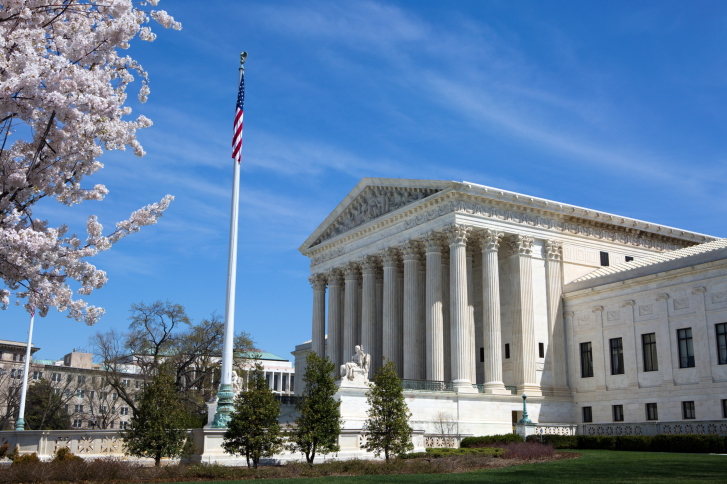In July 2005, America Online (AOL) co-founder Steve Case announced the creation of a new company, Revolution LLC, committed to consumer-directed health care. The following is adapted from remarks by Case at the combined Consumer Directed & Emerging Technologies Health Care conferences, in Washington, DC on December 7, 2005.
A health care system driven by consumers, shaped by market forces, and powered by technology can improve efficiency, lower costs, increase choice, and improve quality. I have just a few months’ experience as a health care executive, but I have 47 years of experience as a health care consumer.
Changes in the health care system are bound to follow in the well-worn path of every major consumer trend in our society: They put more power in the hands of the consumer leading to greater choice, greater personal control, and greater convenience.
Internet Empowering Consumers
In our own time, the Internet has decisively shifted power in favor of consumers. Today, however, there is one major industry that remains immune to change. That industry happens to be the largest industry in America, one into which Americans pour a whopping $1.7 trillion a year: health care.
People will not long tolerate paying more and more for care that does not meet today’s standards of consumer choice, convenience, and control. People won’t put up with a system where they have to struggle for access to their own medical records. People won’t tolerate a system that fails to recognize the value of life-enhancing and cost-cutting programs that promote wellness and healthy living.
I see four trends driving the consumer revolution in health care:
- a shifting of the cost of health care from employers to consumers–coming faster than was imagined a few years ago, and accelerating more each year;
- a demand for more efficiency, cost savings, and convenience in health care–a demand that comes increasingly from patients themselves, as they do more of the paying;
- a desire for more information about health care choices, and more tools and services to manage our health care lives; and
- a desire to live longer, healthier, more active lives, fueled by a greater awareness of the role of prevention and wellness in enabling such a future.
Consumers Expect Better Services
American workers are paying for more and more of their family’s health care. These expenses squeeze family budgets that are already tight. Even consumers in employer-provided, traditional plans are seeing higher and higher co-pays and deductibles.
If Americans are going to pay these extra costs, they are going to demand something in return.
They will want a bigger role in the decisions about their health care. They will want the right to choose their own providers, and the right to pay the same prices insurance companies pay. They will want more information and tools for selecting a provider. They will want more convenience in how they get care.
They will get these things. Because money means power in the marketplace, consumers will have more power because they will be controlling more and more of the money.
The consumer-pays trend is giving rise to the second trend: A greater demand for efficiency, convenience, and control in health care.
There is no reason, for example, why we cannot have an online, complete medical history that can either be stored at a central location or carried with a patient–in a way that protects privacy–that will make medical histories more accurate and available and thus medical care more efficient and more precise.
Information, Tools, Incentives
A greater demand for information and tools that can help people navigate this new, consumer-driven world and manage their health care lives calls for better access to information about providers.
From scheduling appointments, to managing health care finances, to researching health care needs and issues, our goal is to build the leading online resource for health care. And with content will come commerce–the ability to buy services and products directly online, to help diagnose ailments, to identify weak points in someone’s health history, and to obtain direct online advice and care.
Giving consumers the responsibility to choose isn’t the same as giving them the right to real choice, unless those choices can be made with the right tools, with more transparency about price and quality, and fair pricing. There is a final trend we see today, a major lifestyle trend among the baby boom generation: the quest for longer, healthier, more active lives, with a greater awareness of the importance of wellness and prevention.
Our current health system does a mediocre job of reimbursing consumers for sick care and an even worse job of giving people incentives to stay healthy. The leading health coverage company in South Africa, by contrast, provides members with “bonus points” for healthy behaviors–points that can be redeemed for “awards” ranging from discounts on health club memberships and healthy foods, to free movie and airline tickets. In turn, members stay healthier and help reduce the company’s costs. Thus, a virtuous cycle is born. That cycle is long overdue here in the United States.
Change Is Imminent
Consumer-driven health care has become a loaded term these days. Opponents argue consumer-driven care is nothing more than a fancy label on a simple idea: Dump the costs on consumers. Some proponents argue individual choice and control are a solution unto themselves, that making consumers spend their own money will fix the system.
I think both extremes are misguided. Empowering consumers need not mean shifting the lion’s share of the cost to consumers–it means aligning economic incentives and shifting purchasing control to them. And at the same time, sharing costs with consumers without also giving them the information, the tools, and the support they need to make the right choices isn’t fair, and it won’t work. And as we make these changes, we also need to do more to cover the uninsured, and to make sure that all Americans have access to care all Americans.
We recognize that when individuals pay for health care out of pocket, they are buying at a higher price. This is one of the most bizarre elements of our current system: Those who can least afford it–the uninsured and the underinsured–pay the highest prices for health care. If we are going to transition to a more individualized system of health care, we need to find ways to give individual consumers purchasing power they don’t currently have, to at least come close to the pricing that insurance companies obtain.
The technology-driven, consumer-driven revolution in our society has given us more information, more power, more choice in virtually every area of the marketplace … except in what we value most–our health. It goes against the laws of economics and, more importantly, against the laws of human nature, to imagine that this industry will remain immune to change. It will change; it is changing now.
Steve Case is chairman and CEO of Revolution, LLC.
For more information …
More information about Revolution, LLC is available on the firm’s Web site at http://www.revolution.com.



